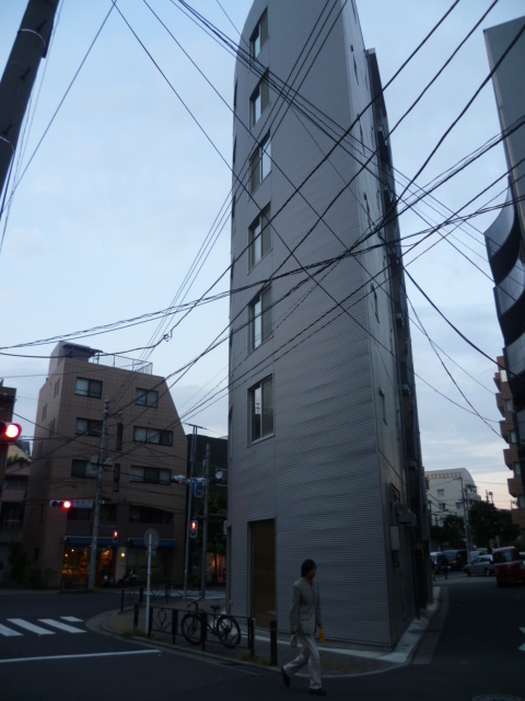 Building with tiny footprint and artsy wall texture in Ikejiri-Ohashi, crisscrossed by utility wires.
Building with tiny footprint and artsy wall texture in Ikejiri-Ohashi, crisscrossed by utility wires. What makes Tokyo so tantalizing to me is its unrivaled density of alluring features and its profusion of things to do and see. The very structure of Tokyo is based upon adeptly and intensively utilizing every square meter of available space. This intensity, flavored with Japanese culture, is the alchemy that creates this city's good life.
The beauty of Tokyo is not the sort of beauty people associate with cities such as Paris. Paris and Tokyo do have certain things in common, including incredible food, high culture, and general sophistication. But Tokyo's beauty is not visible on a grand scale. Instead it resides in the small details of every street.
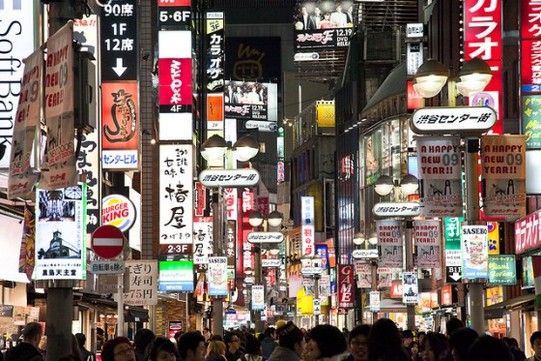 Street scene at night from Shibuya (courtesy cocoip)
Street scene at night from Shibuya (courtesy cocoip) 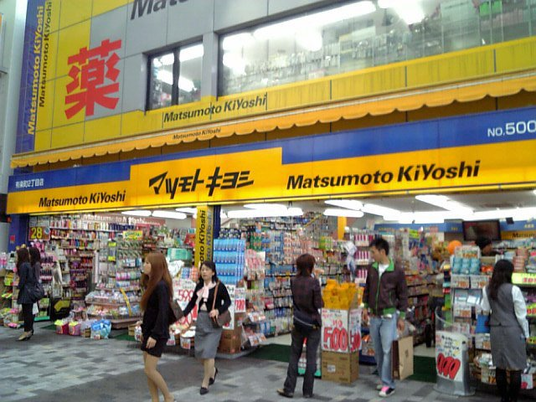 Drug store in central Tokyo.
Drug store in central Tokyo. Drug stores are equally full of density and surprises. The picture above shows Matsumoto Kiyoshi, one of my favorites, in Yurakucho (near Tokyo Station). I don't believe you can find intense organization and variety like this in any store outside of Japan. Shelves and all available spaces, literally, are carefully and artfully filled with seemingly unending products. This product variety, I believe, is partly due to Japan having a dualistic medical system based on both Western medicine and traditional Japanese medicine (similar to Chinese medicine). I wonder if product developers from the US and Europe come to Japan for new product ideas. The stores are full of them!
 An incredible selection of insoles to insert in shoes, at Tokyu Hands.
An incredible selection of insoles to insert in shoes, at Tokyu Hands. In my opinion, it's difficult to find retail rivaling Japan's abroad, at least when it comes to the variety and quality of products offered.
I'm interested in Japan's hyper-developed retail spaces because, like Japanese cooking (which I wrote about in my last posting), they help provide a kind of framework for understanding the uniqueness of Tokyo and other Japanese cities. They're a window into Japanese culture that showcase characteristics that permeate and define Tokyo's general physical environment and urban infrastructure.
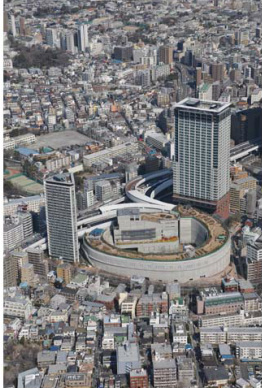 Aerial view of the Ohashi Junction project.
Aerial view of the Ohashi Junction project. As this massive project was only minutes from where I stayed in Ikejiri-Ohashi, I had plenty of time to explore the details. As you can see in the pictures below, very little space went to waste and high quality materials were used throughout. I marveled at the pristine and seemingly perfect cement used throughout the structure. If a project of this quality, complexity and innovativeness were to arise in New York or London, it would be world famous. Nowhere else have I seen highway infrastructure so fully and tastefully integrated into the urban fabric that it actually improves a neighborhood.
I took the elevator up to the Meguro Sky Garden above the interchange and ventured out into the lush landscaping high above the streets of Tokyo. It was hard to imagine that I was walking on the roof of a highway junction. The park space was comfortable, with plenty of places to sit and enjoy the view. It was remarkable and a true green oasis in what would normally be a wasteland used only by vehicles.
If you want to see what it's like to drive through the interchange and then further along a covered highway emerging in another part of Tokyo, check out this video.
Below are a few pictures I took on my walk around the project.
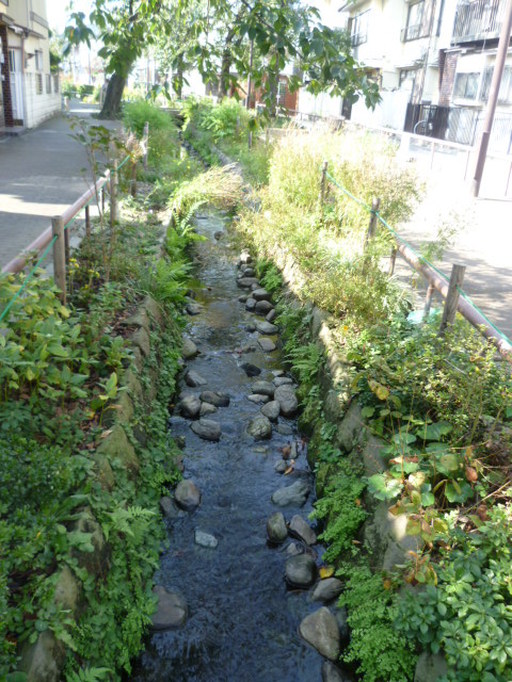 Stream and diverse vegetation on the Meguro Green Promenade.
Stream and diverse vegetation on the Meguro Green Promenade. The Green Promenade runs for several kilometers along the surface of a covered portion of the Meguro River and has been designed as a peaceful oasis in the middle of this hectic city. It is filled with biodiversity and features a little stream with crystal-clear water which provides a home for small fish, crayfish and water striders.
The surrounding landscaping is atypical, especially for Tokyo, in that it has a high level of plant, insect and animal biodiversity. Although I was in the center of the biggest city in the world, I saw many birds, butterflies and other insect life. This totally artificial creation has become an important refuge for nature.
In the video below, you can walk with me along the Promenade. I need to improve my video-taking technique, but it's a glimpse into another part of Tokyo few visitors see.
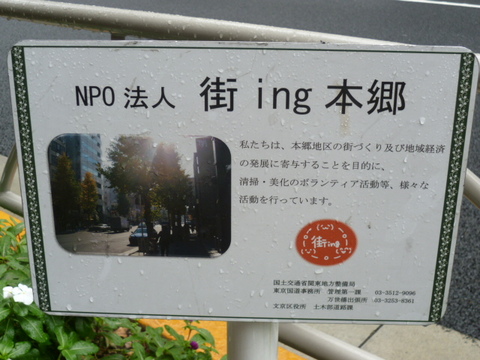 Sign for Machi-ing Hongo, which works to maintain and green the neighborhood
Sign for Machi-ing Hongo, which works to maintain and green the neighborhood The sign to the right is from a local non-profit in the Hongo neighborhood. The organization works to keep the streets clean and green. This NPO (non-profit organization) is called something like "Towning Hongo" if translated into English. This sign illustrates the flexibility and acquisitiveness of the Japanese language. Japanese unabashedly appropriates words, acronyms and even grammatical phrases from foreign languages with no fear of diluting itself. The Japanese may at times be a bit xenophobic, but their language isn't. The top line of the sign reads "NPO Corporation 'Machi-ing' Hongo.
New citizen-based movements are taking to the streets as a reaction to poor economic conditions, lower government resources and a shift away from small, private businesses to chain stores and restaurants. The locally owned stores were apparently better neighborhood stewards.
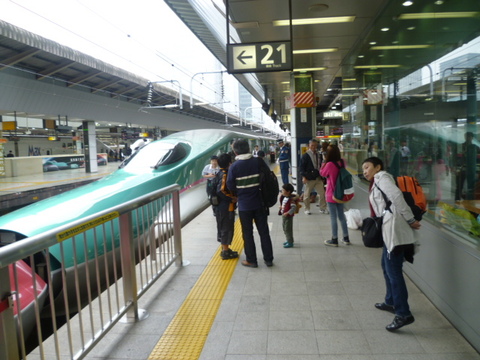 My friend Sachiko on the platform waiting for our train to Tochigi Prefecture.
My friend Sachiko on the platform waiting for our train to Tochigi Prefecture. This city is also connected with all other major cities in Japan by the world-famous bullet train system (picture at left). The stations and trains are spotless and trains are almost always perfectly on time.
Below is a map of the full Tokyo metropolitan commuter rail network, including subways and the many other private rail lines Tokyoites use to get around their metro area. There are over 1000 stations. No system anywhere else comes close in scale.
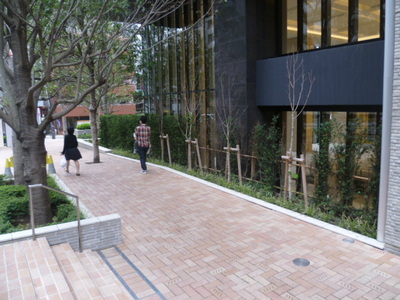
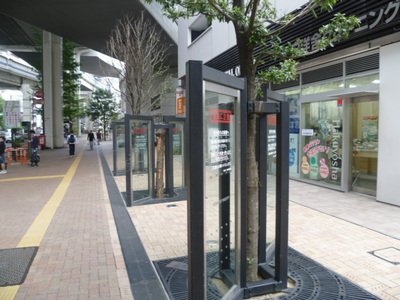
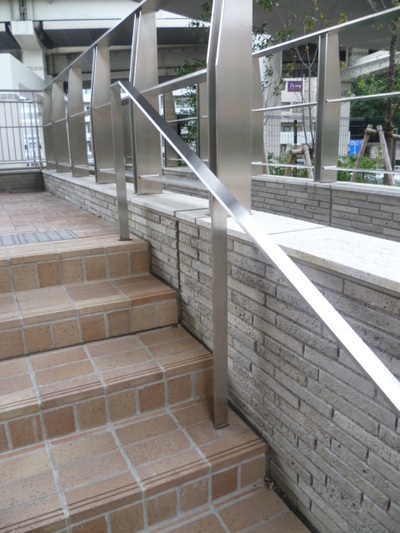
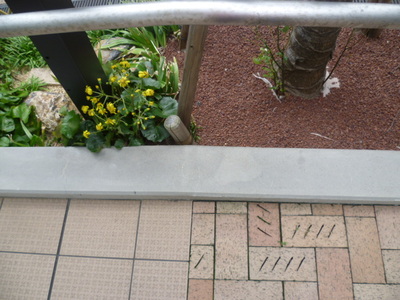
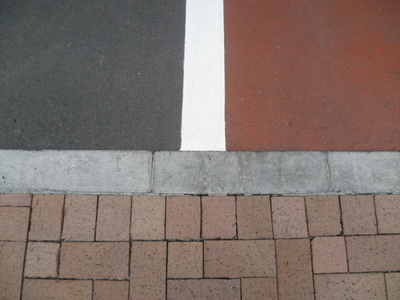
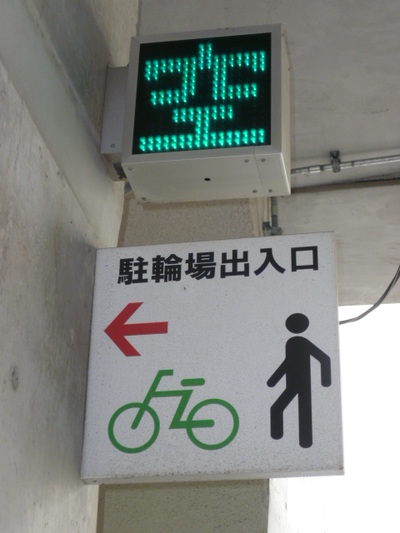
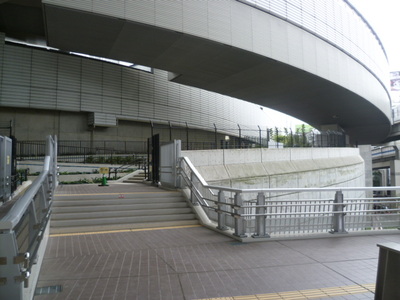
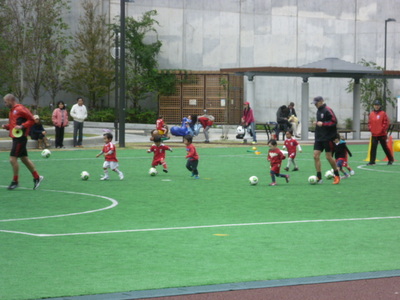
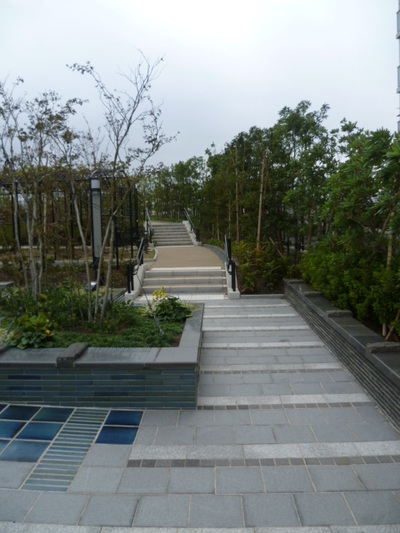
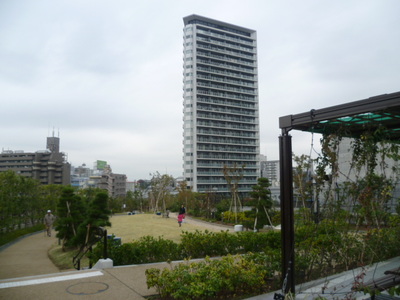
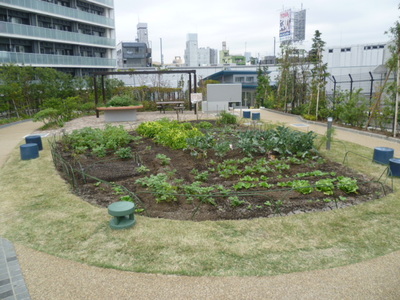
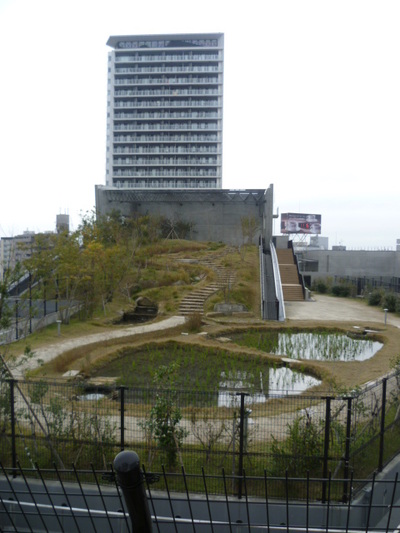
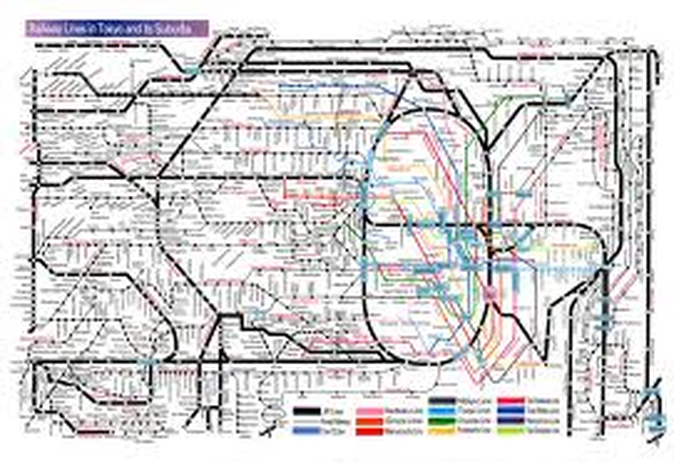

 RSS Feed
RSS Feed

